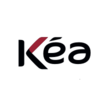Detailed content of our market study
 Inforamtion
Inforamtion
- Number of pages : 35 pages
- Format : Digital and PDF versions
- Last update :
 Summary and extracts
Summary and extracts
1 Market Overview
1.1 Definition and scope of the study
The wood heating market identifies the energy recovery of forest (branches, small trees, etc.) and industrial (sawdust, chips, etc.) by-products.
Wood pellets are consumed in two different markets:
- In the power generation sector: pellets are a co-fuel in coal-fired power plants and a sole fuel in coal-fired power plants converted to reduce greenhouse gas emissions from power generation.
- In the residential heating sector, they are widely used as a practical solid biofuel in stoves and automatic boilers.
Over the past decade, global production of wood pellets has increased steadily, driven by strong growth in demand. During this period, global production of wood pellets has more than quadrupled.
In Germany and Austria, where pellet boilers dominate the market, wood is delivered to the end user mainly in bulk, while in Italy and France, where pellet stoves account for a considerable share of consumption, wood is purchased by the consumer in small bags (∼15 kg).
In Italy, wood pellets are mainly used for heating in the residential sector (boilers and stoves). Policies that favor the renewable heating sector in Italy include
- Tax incentives: wood pellet heating systems can benefit from a scheme to support energy savings in the building sector through tax deductions. The maximum deduction is 30,000 euros;
- Grants (Conto Termico): to promote energy efficiency and the use of renewable energy for heating in the private and public sectors;
- White Certificates (or Energy Efficiency Certificates - EEC): tradable securities certifying energy savings in energy end uses.
Italian consumption of wood pellets has increased in recent years, remaining well above domestic production levels. Pellet consumption is therefore largely covered by imports. The largest concentration of producers is in the northeast of the peninsula. Lombardy is the main production location, with 45 percent of the national supply, followed by Veneto (18 percent), Friuli-Venezia Giulia (16 percent) and Trentino-Alto Adige (8 percent).
In recent years, sustainability requirements for solid biomass have been established in several EU countries. Therefore, market players need to adapt to these requirements in order to continue their activities.
All our studies are available online in PDF format
Take a look at an example of our research on another market!
 Choosing this study means :
Choosing this study means :
Access to more than 35 hours of work
Our studies are the result of over 35 hours of research and analysis. Using our studies allows you to devote more time and added value to your projects.
Benefit from 6 years' experience and over 1,500 industry reports already produced
Our expertise enables us to produce comprehensive studies in all sectors, including niche and emerging markets.
Our know-how and methodology enable us to produce reports that offer unique value for money.
Access to several thousand articles and paid-for data
Businesscoot has access to all the paid economic press as well as exclusive databases to carry out its market research (over 30,000 articles and private sources).
To enhance our research, our analysts also use web indicators (semrush, trends, etc.) to identify market trends and company strategies. (Consult our paying sources)
Guaranteed support after your purchase
A team dedicated to after-sales service, to guarantee you a high level of satisfaction. +44 238 097 0676
A digital format designed for our users
Not only do you have access to a PDF, but also to a digital version designed for our customers. This version gives you access to sources, data in Excel format and graphics. The content of the study can therefore be easily retrieved and adapted for your specific needs.
 Our offers :
Our offers :
the wood heating market | Italy
- What are the figures on the size and growth of the market?
- What is driving the growth of the market and its evolution?
- What is the positioning of companies in the value chain?
- Data from several dozen databases
5 reports pack (-15%) IT Italy
- 5 reports at €75.6 excluding VAT per study to choose from our Italian catalogue for 12 months
- Save 15% on additional studies purchased
- Choose to be refunded any unused credit at the end of the 12-month period (duration of the pack)
See the terms and conditions of the pack and the refund of unused credit.















